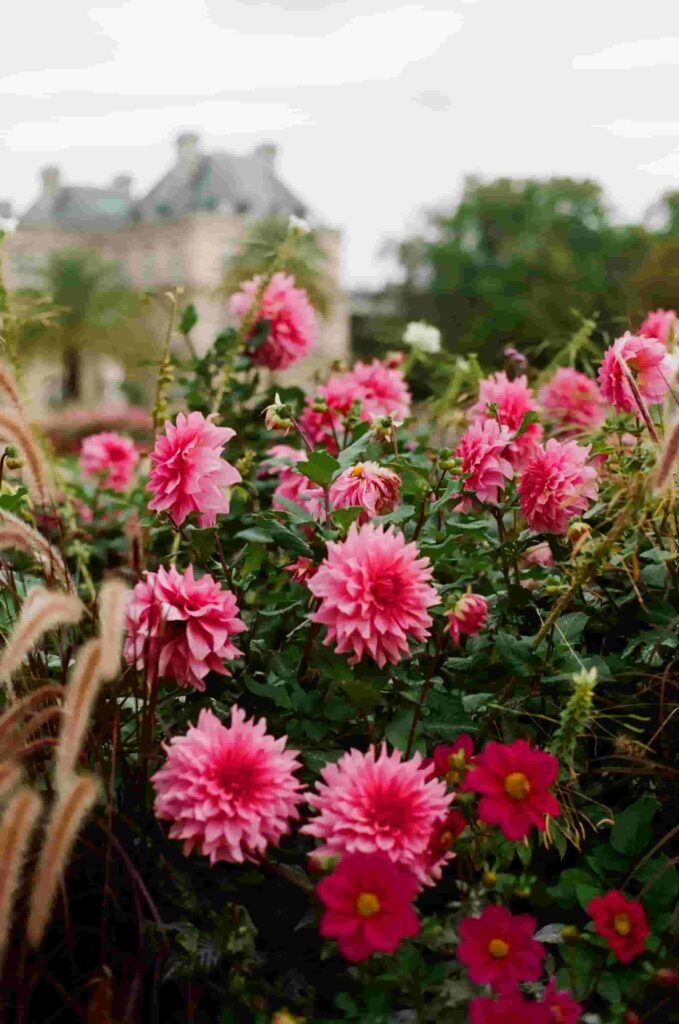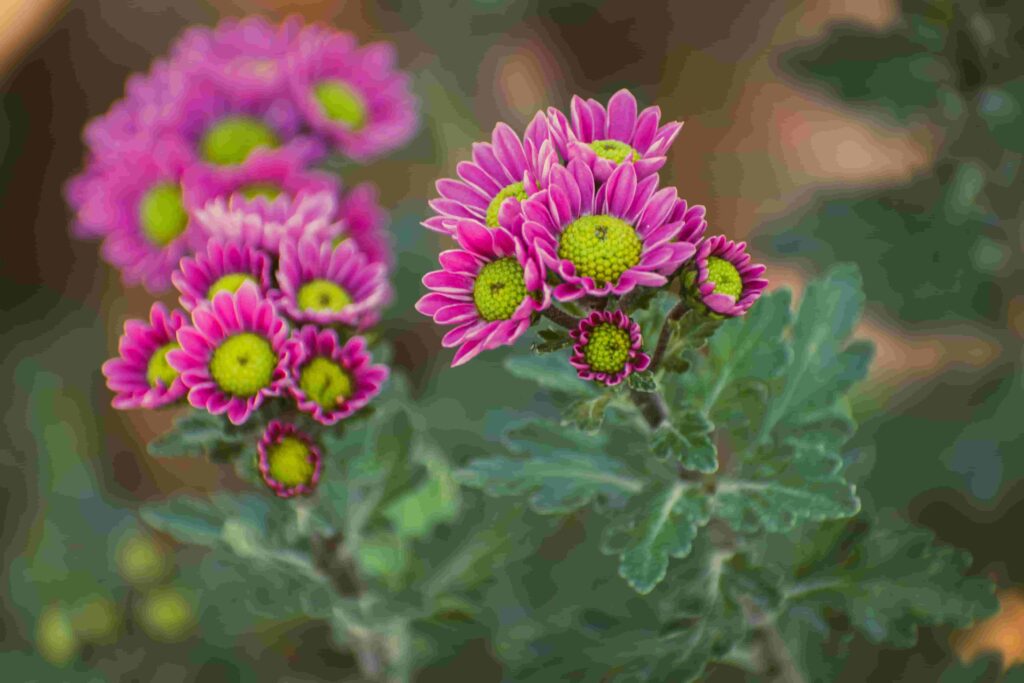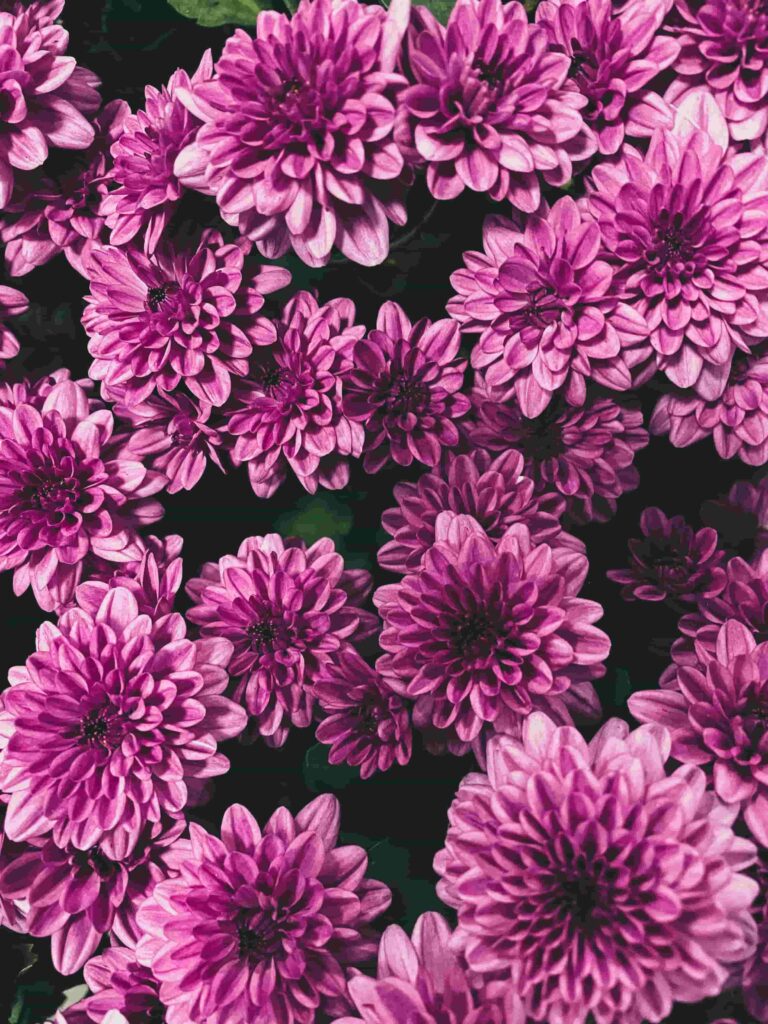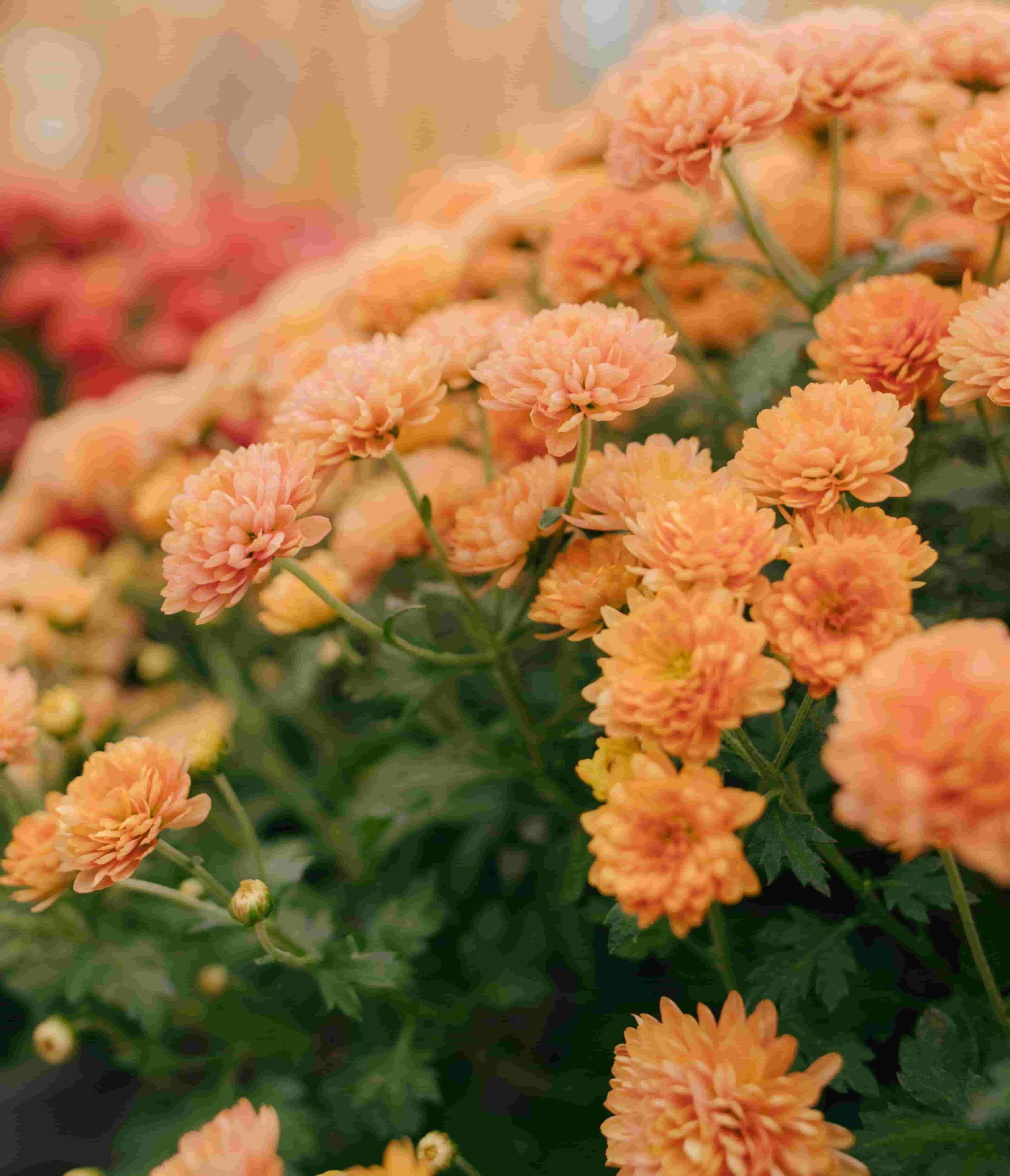परिचय
Chrysanthemums, also known as mums, are stunning flowering plants that add vibrant colors to gardens and floral arrangements. These plants have gained popularity among gardeners and flower aficionados due to their great range of shapes, sizes, and colors. This article will go into the intriguing world of chrysanthemums, covering their history, cultivation, maintenance advice, and various varieties.
विषयसूची
- परिचय
- History of Chrysanthemums
- Popular Chrysanthemum Varieties
- Choosing the Right Location for Your Chrysanthemums
- Preparing the Soil for Planting Chrysanthemums
- Planting Chrysanthemums: Step-by-Step Guide
- Watering and Fertilizing Chrysanthemums
- Pruning and Pinching Chrysanthemums
- Dealing with Pests and Diseases
- Overwintering Chrysanthemums
- Harvesting and Using Chrysanthemum Flowers
- Creative Uses of Chrysanthemums in Floral Arrangements
- निष्कर्ष
- Frequently Asked Questions (FAQs)
History of Chrysanthemums

Chrysanthemums have a rich history that dates back thousands of years. Originating in China, these beautiful flowers were cultivated as early as the 15th century BC. They were cherished for their ornamental value and were often depicted in Chinese art and poetry. The chrysanthemum eventually made its way to Japan, where it became the national flower and symbolized longevity and happiness. Today, they are widely grown and enjoyed all over the world.
Popular Chrysanthemum Varieties
Chrysanthemum plants come in a wide array of varieties, each with its own unique characteristics. Some popular types include:
- Daisy Chrysanthemum (Chrysanthemum multicaule): These charming flowers have a daisy-like appearance, with a central disc surrounded by colorful petals.
- Cushion Chrysanthemum (Chrysanthemum morifolium): Known for their compact, rounded growth habit, cushion chrysanthemum plants produce abundant blooms in various colors.
- Spider Chrysanthemum (Chrysanthemum x morifolium): Characterized by long, thin petals that resemble spider legs, these chrysanthemum varieties create a unique and striking visual appeal.
- Pompon Chrysanthemum (Chrysanthemum x morifolium): With their small, ball-shaped blooms, pompon chrysanthemum varieties are delightful additions to gardens and floral arrangements.
Choosing the Right Location for Your Chrysanthemums
When selecting a location for your chrysanthemum, consider the following factors:
Sunlight
Chrysanthemum plants thrive in full sun, so choose a spot that receives at least six hours of direct sunlight each day.
Soil
Make certain that the soil has good drainage and is abundant in organic matter. Chrysanthemum plants favor neutral to slightly acidic soil pH values.
Air Circulation
Good air circulation is essential for preventing diseases in chrysanthemum plants. Avoid planting them in crowded areas where air movement is restricted.
Preparing the Soil for Planting Chrysanthemums
To prepare the soil for planting chrysanthemums, follow these steps:
- Clear the planting area by removing any weeds, rocks, or debris.
- To increase drainage, loosen the soil with a garden fork or tiller.
- To improve the productivity of soil, add organic material to the soil, such as compost or well-rotted manure.
Planting Chrysanthemums: Step-by-Step Guide

Follow these steps to plant your chrysanthemums successfully:
- Excavate a pit that is twice the width of the root ball and sufficiently deep to house the plant’s root system.
- Gently remove the chrysanthemum from its container, taking care not to damage the roots.
- Place the plant in the hole, ensuring that it sits at the same depth it was previously growing.
- Fill the hole with soil, patting it gently around the plant to remove any air pockets.
- Water the newly planted chrysanthemum thoroughly.
Watering and Fertilizing Chrysanthemums
Proper watering and fertilizing are crucial for the health and vitality of chrysanthemum plants. Here are some guidelines to follow:
- Water the plants deeply but infrequently, allowing the top inch of soil to dry out before the next watering session.
- Apply a balanced fertilizer formulated for flowering plants every two to four weeks during the growing season.
- Prevent excessive watering to avoid the risk of root rot and other fungal diseases.
Pruning and Pinching Chrysanthemums
Pruning and pinching help promote bushier growth and more abundant blooms in chrysanthemum plants. Here’s what you need to know:
- Pinch back the plants when they reach a height of 6 to 8 inches. This encourages lateral branching and prevents legginess.
- Continue pinching back the plants every few weeks until early July to maintain a compact and attractive shape.
Dealing with Pests and Diseases
Chrysanthemums are generally resilient plants, but they can still be susceptible to certain pests and diseases. Here are some common issues and how to address them:
- Aphids: Spray the affected plants with a strong stream of water or use insecticidal soap to control aphid infestations.
- Powdery Mildew: Improve air circulation and avoid overhead watering to prevent powdery mildew. If detected, apply a fungicide as directed.
- Spider Mites: Use insecticidal soap or neem oil to eliminate spider mites from chrysanthemums.
Overwintering Chrysanthemums
Chrysanthemum plants can be overwintered to ensure their survival for the next growing season. Follow these steps:
- Cut back the stems to a height of 4 to 6 inches after the first frost.
- Mulch around the plants with a layer of straw or shredded leaves to protect the roots from freezing temperatures.
- Take away the mulch during early spring once the threat of frost has subsided.
Harvesting and Using Chrysanthemum Flowers

Chrysanthemum flowers can be harvested for various purposes, including floral arrangements and tea-making. They can be gathered and used as follows:
- Choose fully bloomed flowers with vibrant colors.
- Snip the stems just above a leaf node or bud joint.
- Remove any foliage that will be below the waterline in floral arrangements.
- For tea, dry the flowers in a well-ventilated area, and store them in an airtight container.
Creative Uses of Chrysanthemums in Floral Arrangements
Chrysanthemums offer endless possibilities for creative floral arrangements. Here are some suggestions to get you motivated:
- Monochromatic Beauty: Create a stunning arrangement using chrysanthemums of a single color. Choose different varieties with varying petal shapes and sizes for added visual interest.
- Mixed Blooms: Combine chrysanthemums with other flowers, such as roses, lilies, or dahlias, to create a vibrant and diverse bouquet. Play with contrasting colors and textures for a dynamic arrangement.
- Pumpkin Centerpieces: Hollow out a small pumpkin and fill it with a mix of chrysanthemums in autumnal colors like orange, yellow, and burgundy. This charming centerpiece is perfect for fall gatherings and Thanksgiving celebrations.
- Floating Blooms: Float chrysanthemum heads in a shallow bowl or glass container filled with water. This simple yet elegant display adds a touch of serenity to any space.
- Dried Flower Wreaths: Preserve the beauty of chrysanthemums by drying them and using them to create wreaths. Combine them with other dried flowers and foliage for a timeless and rustic decoration.
निष्कर्ष
Chrysanthemums are captivating flowers that bring beauty and vibrancy to gardens and floral arrangements. By following the tips and guidelines provided in this article, you can successfully grow and care for these stunning blooms. Whether you choose to cultivate them in your garden, use them in floral arrangements, or enjoy them as tea, chrysanthemums will undoubtedly enhance your surroundings with their elegance and charm.
Frequently Asked Questions (FAQs)
Q: Can I grow chrysanthemums from seeds?
A: Yes, chrysanthemums can be grown from seeds. However, they can be challenging to germinate and require specific conditions for successful growth.
Q: How often should I water my chrysanthemums?
A: Water your chrysanthemums deeply but infrequently. Verify that the soil remains consistently moist without being soaked. Depending on the weather and the soil’s moisture content, adjust the frequency.
Q: Can chrysanthemums be grown in containers?
A: Yes, chrysanthemums can thrive in containers as long as they have sufficient space for root growth and receive adequate sunlight and water.
Q: When is the best time to divide chrysanthemum plants?
A: The best time to divide chrysanthemum plants is in early spring, before new growth begins. This allows the divided plants to establish roots and prepare for the growing season.
Q: How long do chrysanthemum flowers typically last?
A: The longevity of chrysanthemum flowers varies depending on the variety and environmental conditions. On average, they can last for one to two weeks when properly cared for.

